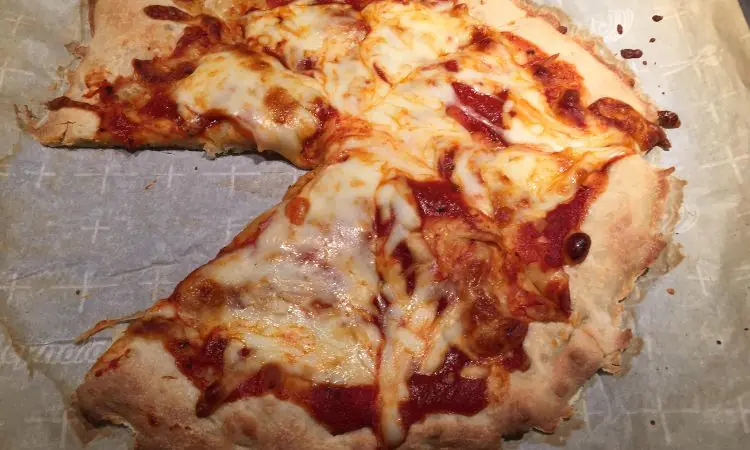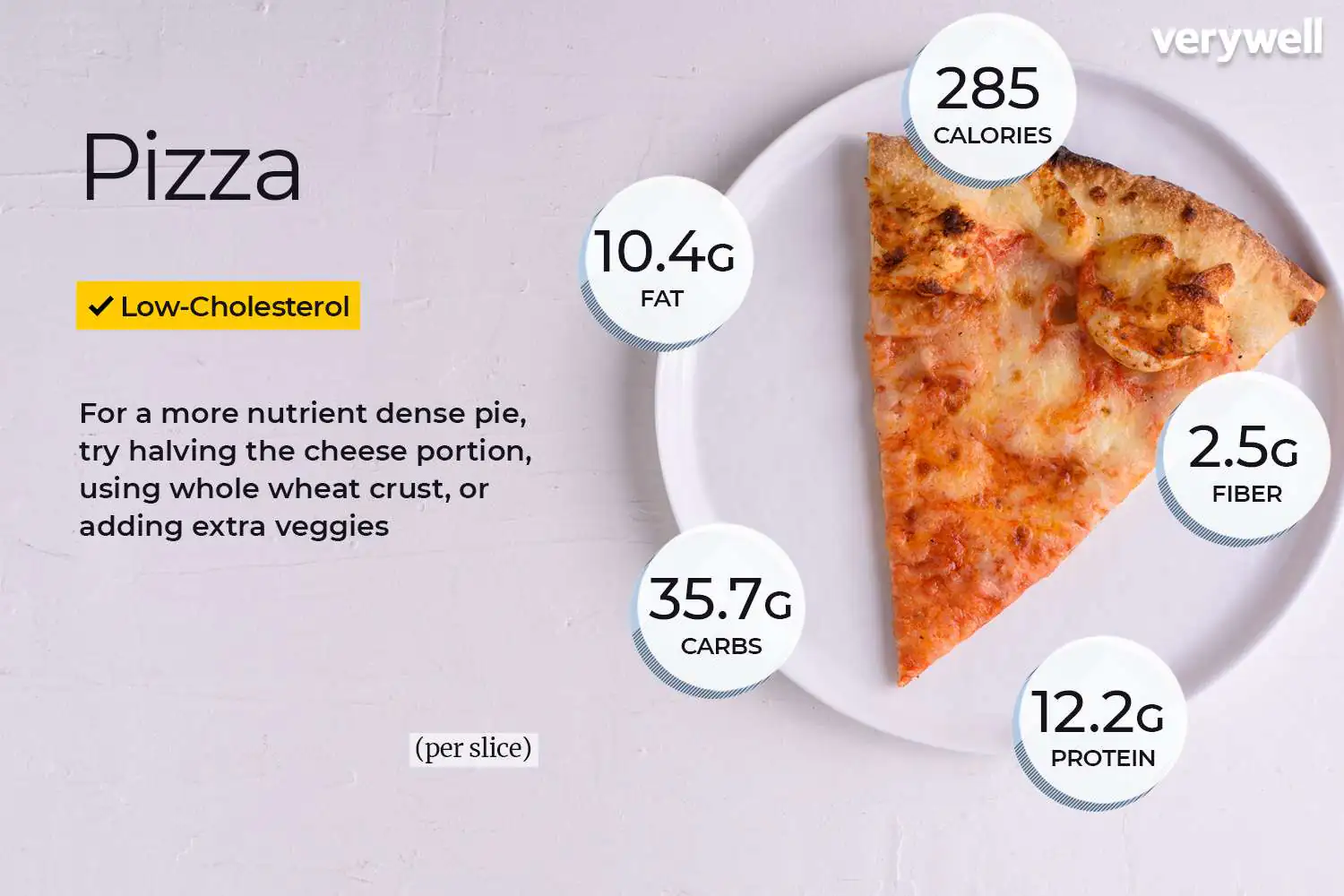A slice of homemade pizza typically contains around 200 to 300 calories. The exact count depends on the toppings and crust thickness.
A delectable slice of homemade pizza is not just a treat for your taste buds but also a variable feast in terms of calories. Homemade pizza allows you to choose your ingredients, which dictates the calorie content.
Whether you opt for a thin crust or a thick, doughy base, sprinkle it sparingly with cheese, or pile on the veggies, each choice directly impacts the nutritional value. Crafting your pizza at home also allows for healthier substitutions that can reduce the overall calorie count. For anyone mindful about their caloric intake, a homemade pizza is a customizable option that can be adjusted to fit into a balanced diet. As calorie needs differ per individual, keeping track of the ingredients used can help maintain dietary goals while still enjoying this homemade classic.
Calories In Homemade Pizza
Have you ever wondered about the calories packed in a slice of your homemade pizza? Making pizza at home allows control over ingredients. This helps you calculate the energy content with better accuracy. A typical slice can vary significantly in calorific value. It all depends on choices during preparation.
Ingredients Impact
Each component adds its share to the total calorie count:
- Dough: The base, made of flour, yeast, water, and oil, provides many calories.
- Cheese: Options like mozzarella contribute to the creamy texture and caloric intake.
- Sauces: Tomato sauce is relatively low in calories, while creamy sauces offer more.
- Toppings: Vegetables add minimal calories, but meats like pepperoni increase the count.
Select ingredients wisely to manage the calorie content.
Size Matters
The pizza’s size influences the calories per slice. Here’s a brief comparison:
| Pizza Size | Average Calories |
| Small (8″) | 200-250 calories per slice |
| Medium (10″) | 250-300 calories per slice |
| Large (12″) | 300-350 calories per slice |
Remember, these estimates change based on topping choices and crust thickness. Thin crusts contain fewer calories than thick, doughy ones. Keeping a close eye on serving size will help maintain calorie intake control.

Decoding The Dough
Let’s peel back the layers of your homemade pizza, starting with its foundation—the dough. Much more than just flour, water, and yeast, this base contributes significantly to the calorie count of each slice. So, how does the dough you craft in your kitchen translate into calories?
Flour Type’s Role
Choose your flour wisely; it’s not just about taste and texture; it’s also about calories.
- All-purpose flour is typical and versatile.
- Whole wheat flour adds fiber but also more nutrients.
- Almond flour offers a low-carb option with fewer calories.
Yeast And Rise Effects
Yeast works its magic in the dough by causing it to rise.
Fermentation creates air pockets, making your pizza light and fluffy. A longer rise time could mean a lighter dough, which subtly impacts calorie count. Find the right balance for a delicious, guilt-free slice.
Toppings Tell The Tale
When eyeing that delicious slice of homemade pizza, the toppings define its caloric content. They are the flavorful storytellers who can take a pizza from a modest meal to a decadent delight. Understanding how toppings affect the calorie count is key for anyone mindful of their intake.
Cheese Choices
Cheese lays the foundation of flavor on your slice. But not all cheese is created equal when it comes to calories. Here’s a quick look at popular cheese options:
- Mozzarella: A favorite for its melty goodness, it generally adds about 85 calories per ounce.
- Cheddar: Packs more punch, with around 110 calories per ounce.
- Ricotta: Offers a lighter touch, with roughly 100 calories in a two-tablespoon serving.
Skim versions of these cheeses can shave off calories for a guilt-free experience.
Veggies Vs. Meats
Toppings are divided into two camps: veggies and meats. Usually, vegetables offer fewer calories and more nutrients. Meats, on the other hand, can quickly escalate calorie counts. Here’s a breakdown:
| Veggie | Calories (Per serving) |
| Tomatoes | 5 |
| Onions | 15 |
| Peppers | 5 |
| Meat | Calories (Per serving) |
| Pepperoni | 80 |
| Sausage | 100 |
| Bacon | 43 |
Opting for veggies over meats can significantly reduce the calorie count of your homemade pizza slice. Be savvy with your combinations for a balance of taste and health.

Credit: www.miamiherald.com
Calculating The Count
“Calculating the Count” is critical for those watching their daily caloric intake. Homemade pizza can be surprisingly varied in calories. Factors affecting the count include portion size, ingredients, and cooking methods. A single slice of pizza might seem innocent enough. But diving into the details reveals more to that slice than meets the eye. Let’s break down how to figure out the exact number of calories you’re consuming with that delicious homemade slice.
Portion Sizes
The first step in understanding the calorie count is to look at portion sizes. The size of a pizza slice can differ. A ‘slice’ isn’t one-size-fits-all. Here’s what to consider:
- Diameter of pizza: The larger the diameter, the bigger the slices.
- Number of cuts: More slices mean smaller portions.
- Slice thickness: Thicker crusts hold more calories.
Use a kitchen scale for precision. Weigh your slice for the most accurate calorie count.
Cooking Methods
Cooking methods influence the calorie count in your homemade pizza slice. Baking vs. pan-frying can create a difference in the final calorie amount. Here’s what to keep in mind:
| Cooking Method | Impact on Calories |
| Baking | Generally, fewer calories, as less oil is used. |
| Pan-frying | It can increase calories due to extra oil. |
| Grilling | It might reduce fat, impacting total calories. |
Remember to account for any oil or butter used in cooking. These add more calories to your slice.
Comparison With Restaurant Pizza
Many people love a good slice of pizza, whether from a local pizzeria or homemade. But calorie count is often a concern. Let’s dive into how homemade pizza stacks up against restaurant offerings regarding calories and nutrition.
Nutritional Differences
A slice of homemade pizza has unique nutritional benefits. You choose what goes into your pizza. You can use whole ingredients and avoid preservatives in many restaurant pizzas. Take a look at the typical nutritional content in homemade versus restaurant pizza:
| Nutritional Aspect | Homemade Pizza | Restaurant Pizza |
| Calories per Slice | Varies, often lower | Varies, often higher |
| Sodium | Lower | Higher |
| Saturated Fat | Adjustable | Often higher |
| Additives | None | Possible |
Based on this table, homemade pizza often means fewer calories and better nutrition.
Control Over Calories
With homemade pizza, you control the calories. By changing ingredients, you can make healthier choices. Enjoy these benefits:
- Customize toppings: Add veggies for nutrients.
- Manage cheese: Choose low-fat or even vegan cheese.
- Pick your protein: Opt for lean meats or plant-based options.
- Control portion size: Create small, satisfying slices.
- Whole-grain crusts: A fiber-rich option that fills you up.
Homemade pizza can be significantly lower in calories than its restaurant counterpart while satisfying your cravings.
Making Healthier Choices
Embarking on a journey toward healthier eating doesn’t mean you have to give up the delights of a homemade pizza. The key lies in understanding the ingredients that contribute to the calorie count of your pizza slice. A typical slice of homemade pizza averages between 150-300 calories, depending on toppings and thickness. But you can reduce calories without cutting out flavor with a few smart swaps and mindful preparation.
Substitute Suggestions
Substitutes are a surefire way to enjoy your pizza while keeping calorie intake in check.
- Opt for whole wheat over white flour in your dough.
- Reduce cheese or choose low-fat cheese varieties.
- Swap out meat toppings for veggies or lean proteins.
- Consider a tomato paste or sauce with no added sugars.
Balanced Meal Tips
Balance is crucial for a healthy diet. Your pizza can fit into a balanced meal with these tips:
- Pair your slice with a green salad to add fiber.
- Control portion sizes to avoid overeating.
- Integrate fruits or nuts for added nutrition.
Incorporating these strategies helps transform a guilty pleasure into a nourishing meal!

Frequently Asked Questions For How Many Calories In A Slice Of Homemade Pizza
Is Homemade Pizza Healthier Than Take Out?
Homemade pizza can be healthier than takeout, as you control the ingredients and can use whole grains, less cheese, and more vegetables.
How Many Calories Are In A Traditional Slice Of Pizza?
A traditional slice of pizza typically contains around 250 to 300 calories. The exact count can vary based on toppings and crust thickness.
How Many Calories Are There in a Slice of Fresh Pizza?
A slice of fresh pizza typically contains between 200 to 300 calories, depending on toppings and crust thickness.
How Many Calories Are In A Homemade Italian Pizza?
A homemade Italian pizza typically contains about 200 to 300 calories per slice, depending on the toppings and size of the slice.
Conclusion
Understanding the caloric content of homemade pizza allows for informed dietary choices. Each slice’s calories vary based on toppings and crust thickness. Remember, customizing your pizza can keep it within your meal plan. Enjoy your homemade creation mindfully, balancing flavor and nutrition.
Explore healthy alternatives to indulge responsibly!

As the author of the “Ultimate Pizza Guide: Recipes, Tips & Secrets Revealed,” I’m dedicated to sharing my love for pizza and empowering others to create delicious homemade pizzas with ease. Join me on a journey to uncover the secrets to perfecting your pizza game!



